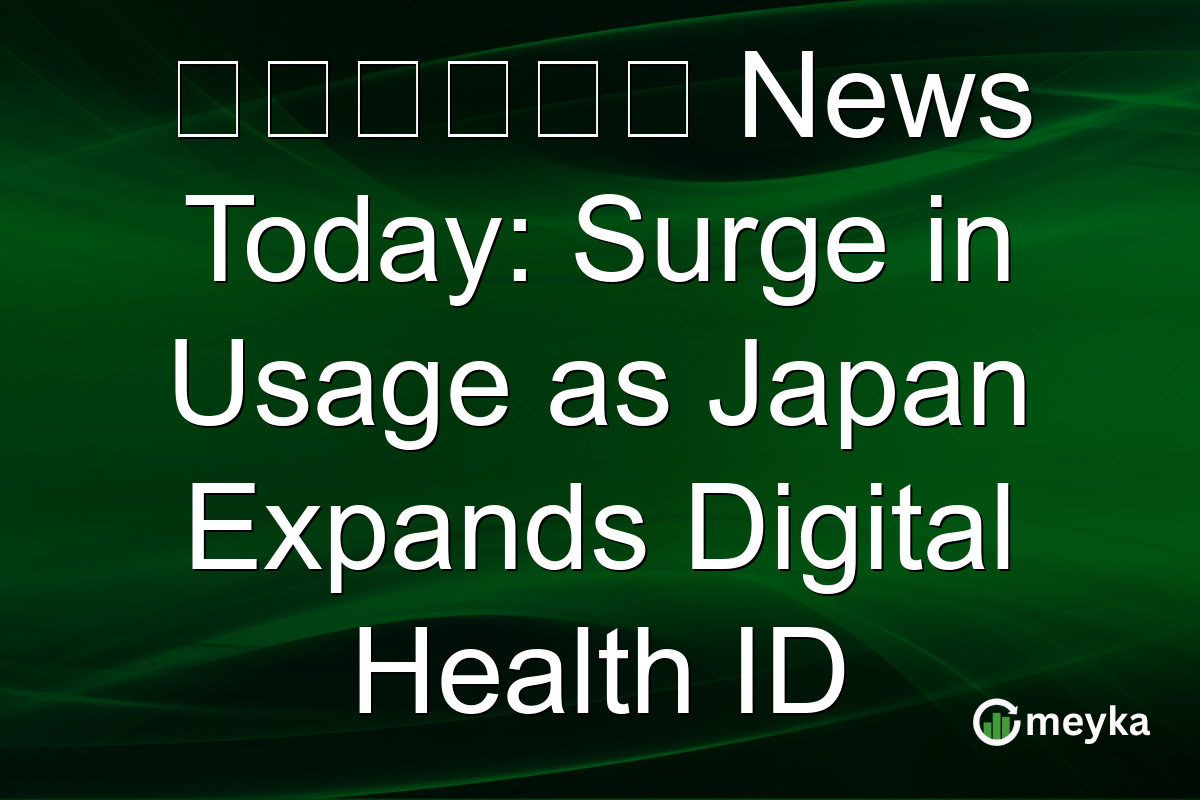マイナ保険証 News Today: Surge in Usage as Japan Expands Digital Health ID
Japan’s healthcare system is witnessing a digital transformation with the surge in usage of マイナ保険証, or the My Number health card. This digital health ID is pivotal in Japan’s push toward healthcare digitization, aiming to improve efficiency and data security. Recent government policies and incentives have significantly increased adoption rates, with more medical facilities and citizens opting for this modern solution.
The Rise of the Digital Health ID in Japan
Japan’s move towards digital health ID is part of a broader strategy to streamline healthcare services. The マイナ保険証, also known as the My Number health card, integrates medical and administrative information into one seamless platform. This integration is expected to save time and reduce administrative errors in healthcare settings. According to a report by Reuters, substantial government investment and promotional campaigns have boosted the card’s usage among citizens, with adoption rates climbing by over 30% since the beginning of the year.
Drivers of Increased Adoption
Several factors have driven the increased adoption of the My Number health card. Government incentives that include subsidies for medical facilities adopting the digital ID and educational campaigns aimed at citizens have played a crucial role. Furthermore, the benefits of quick access to accurate and comprehensive patient information have made this transition appealing. According to Bloomberg, healthcare providers reported increased operational efficiency as a primary motivator for integrating digital IDs.
Impact on Japanese Healthcare System
The widespread use of マイナ保険証 has profound implications for the Japanese healthcare system. By digitizing medical records, Japan can enhance data security, reducing the risk of information breaches. Moreover, patient care experiences are improved through streamlined processes and more accurate data retrieval. Nikkei highlights that digital health IDs also facilitate telemedicine, a rapidly growing need in rural areas and among aging populations. This advancement makes healthcare more accessible and efficient across the country.
Final Thoughts
The surge in マイナ保険証 adoption marks a significant milestone in the digital evolution of Japanese healthcare. By integrating comprehensive medical data into a single digital ID, Japan is setting a benchmark for efficiency and security in healthcare services. This trend not only streamlines administrative tasks but also paves the way for more personalized patient care. As the adoption continues to grow, the focus will likely shift toward further enhancing the interoperability of medical systems. This is where platforms like Meyka, leveraging AI-powered analytics, can provide tangible benefits. Whether it’s reducing wait times or ensuring precise medical records, the My Number health card represents a leap forward in healthcare service delivery in Japan. The ongoing adaptation of this system could inspire similar models in other countries seeking digital transformation in healthcare.
FAQs
The マイナ保険証, or My Number health card, is a digital identification system in Japan that consolidates medical and administrative information into one platform. It’s designed to enhance healthcare efficiency and security by providing quick access to patient data.
The adoption has streamlined administrative processes, reduced errors, and improved data security. It also facilitates telemedicine, which is crucial given Japan’s aging population and remote geographical areas, making healthcare more efficient and accessible.
The Japanese government has implemented subsidies for medical facilities adopting the digital ID and promoted educational campaigns for citizens, highlighting the benefits of faster service and improved accuracy in patient data management.
Disclaimer:
This is for information only, not financial advice. Always do your research.






